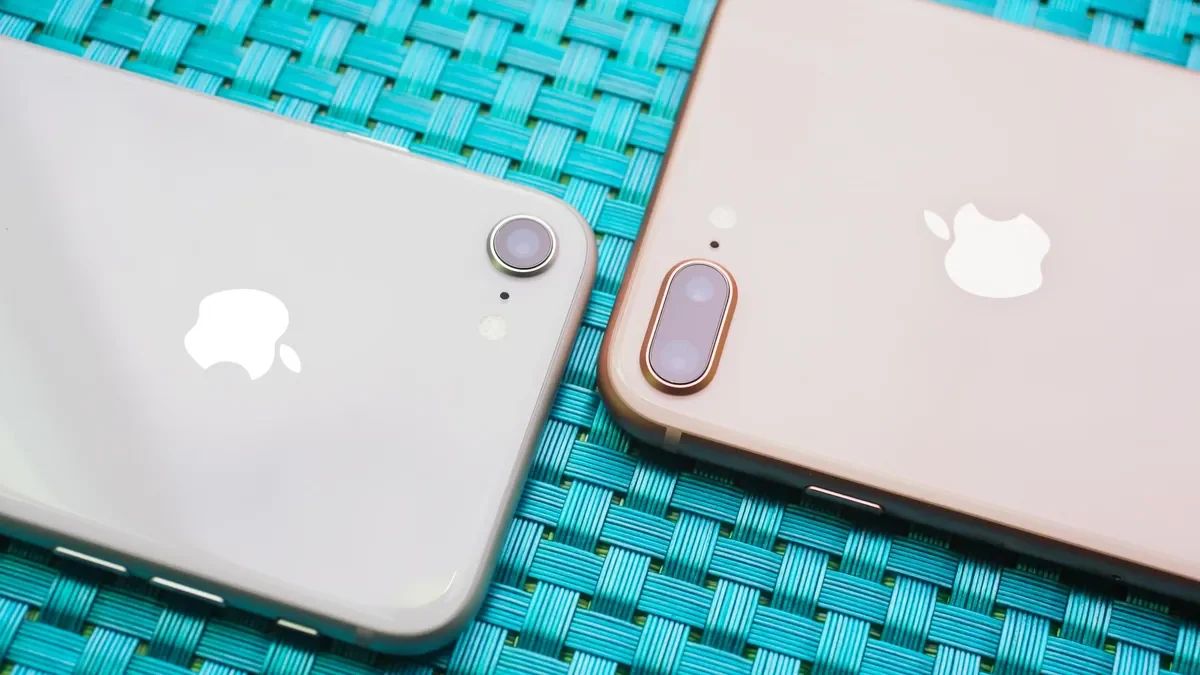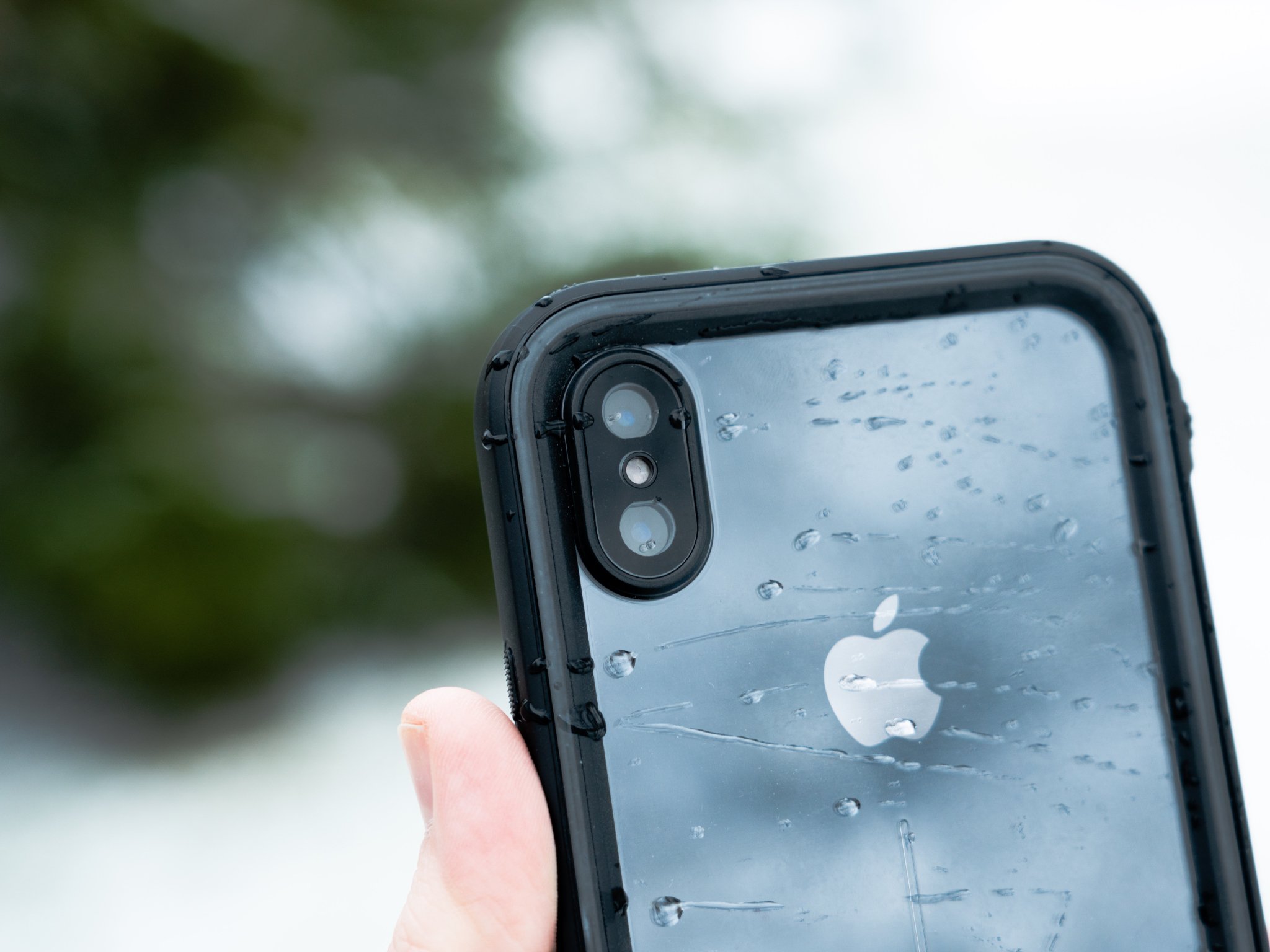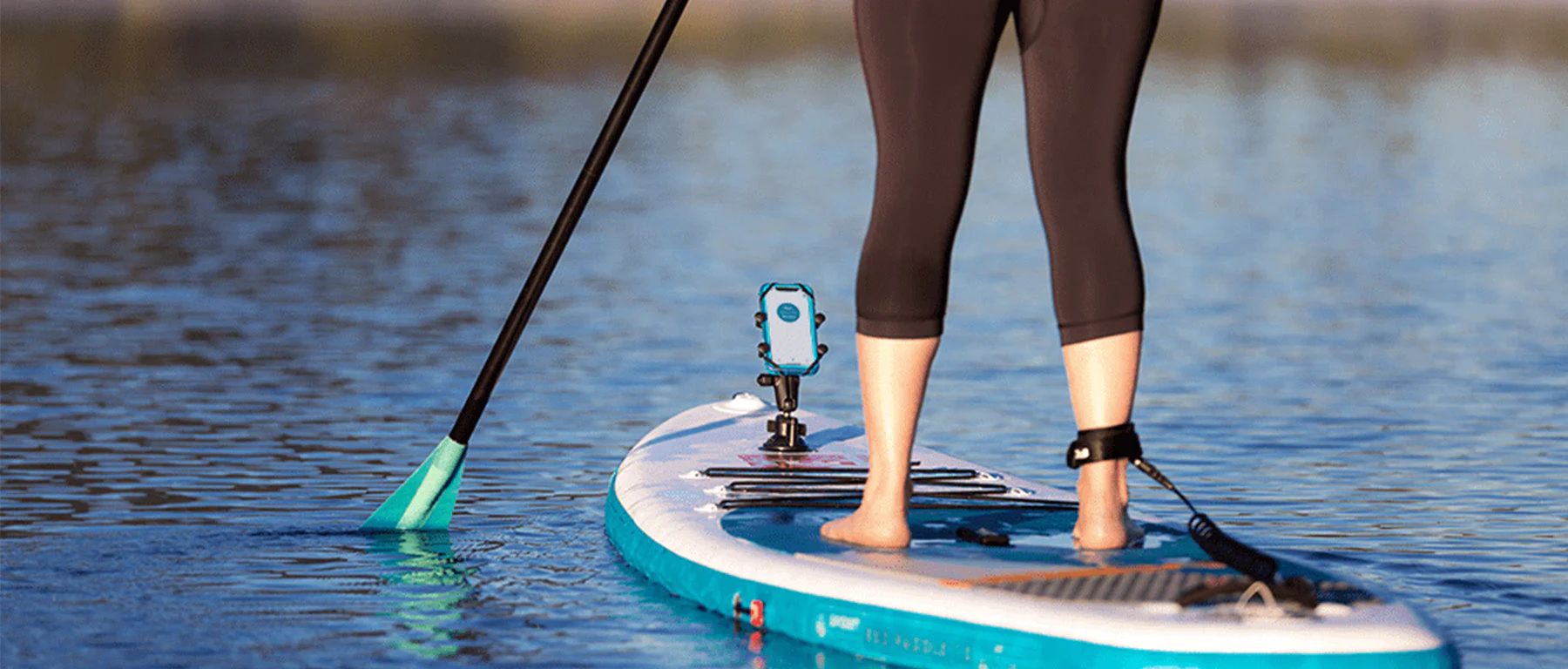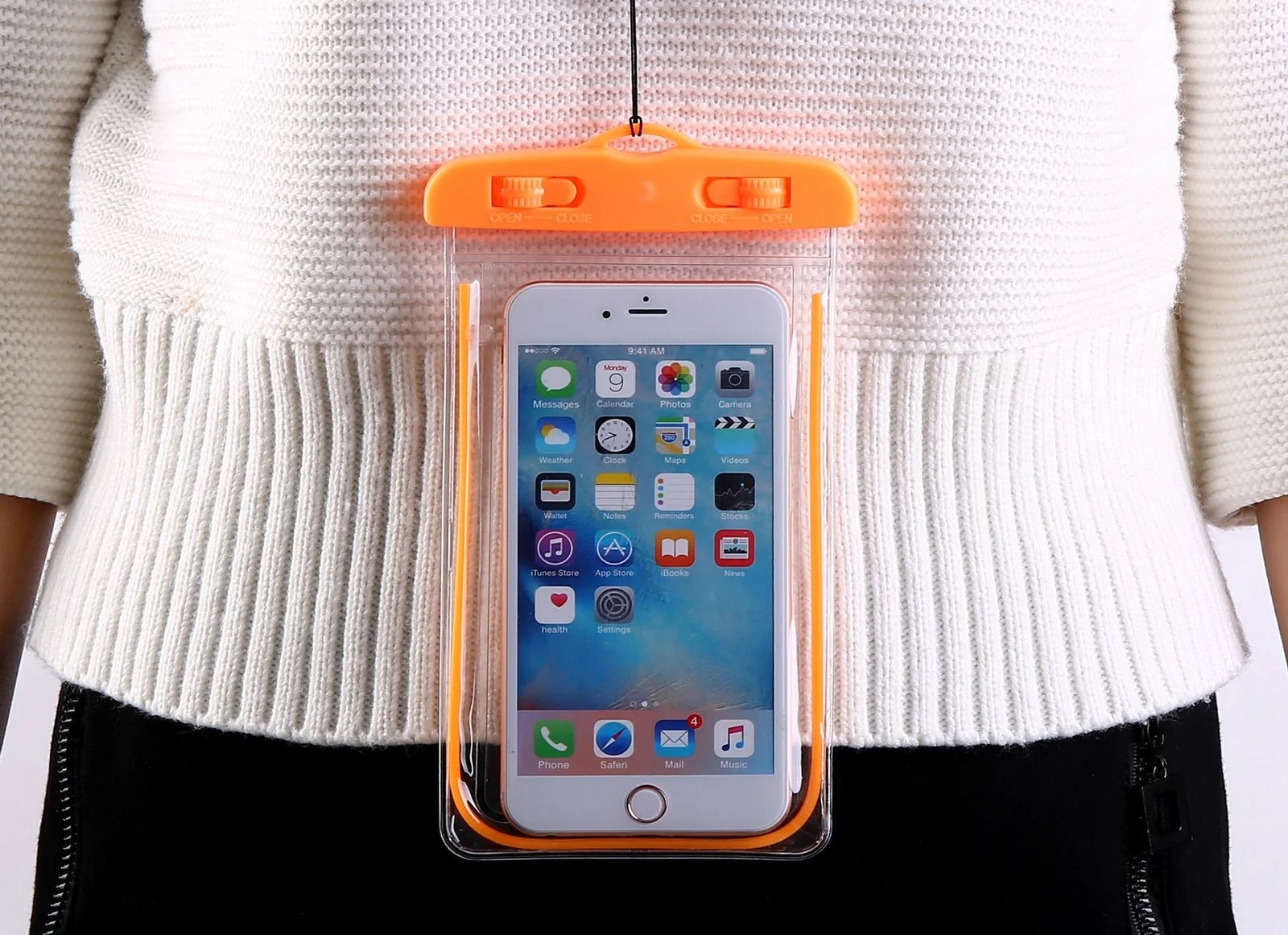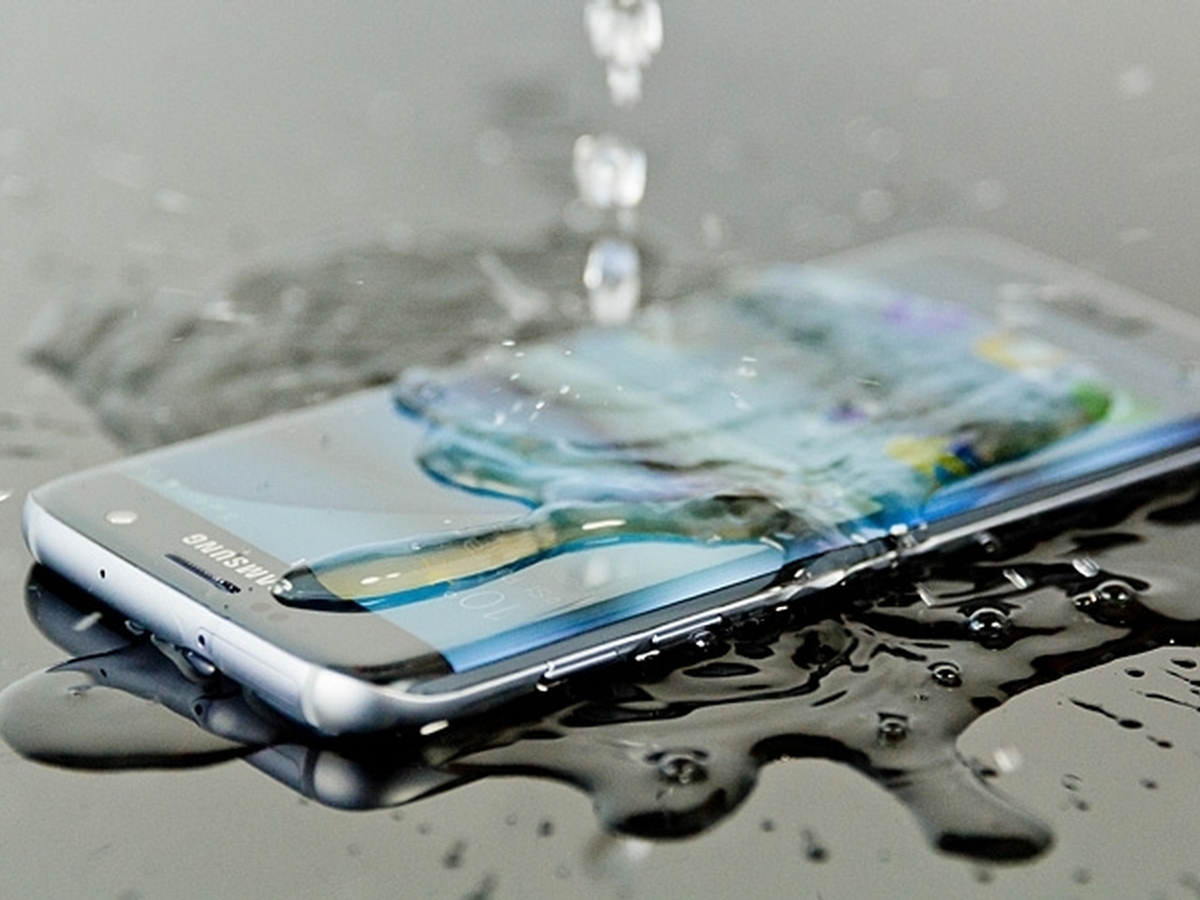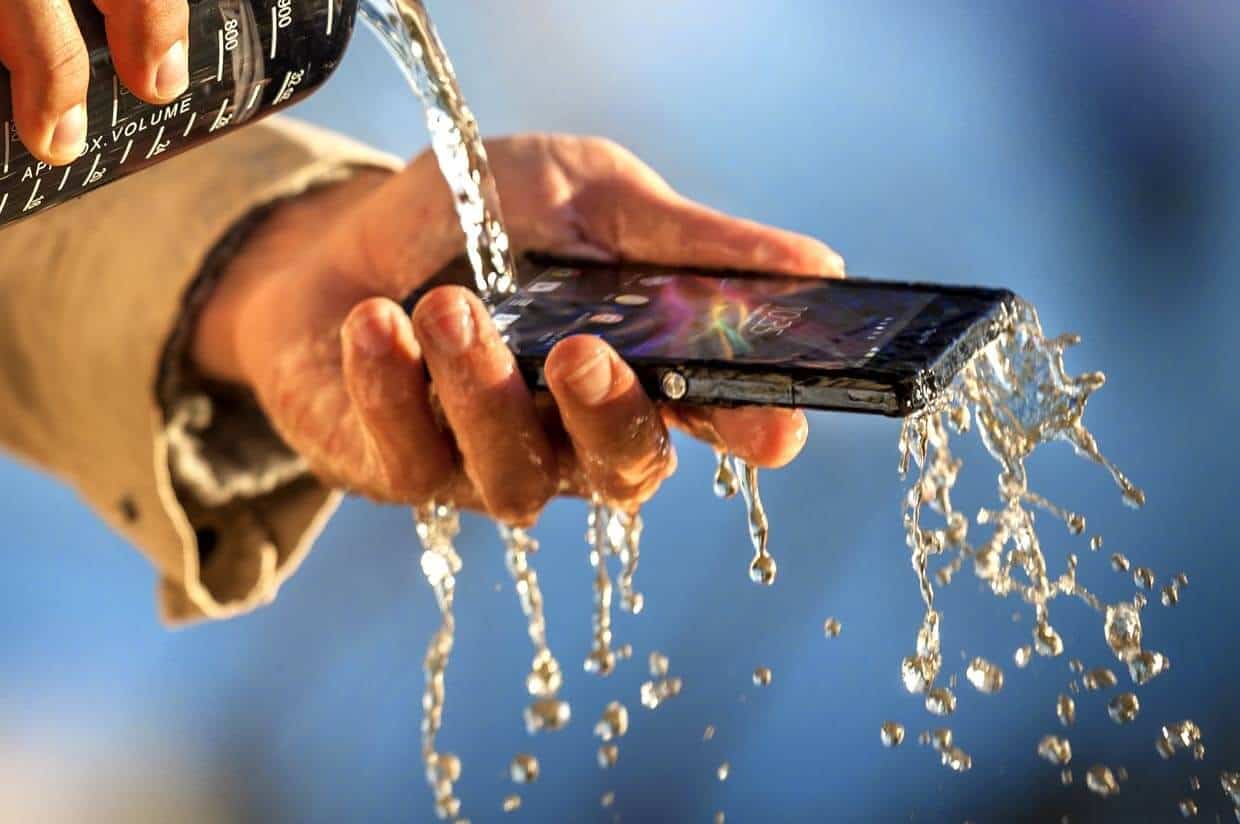Introduction
Waterproof phones have become increasingly popular due to their ability to withstand accidental submersion and exposure to water. However, despite their resilient design, these devices are not entirely immune to water damage. Accidents happen, and it's not uncommon for a waterproof phone to end up submerged in water, whether it's a pool, sink, or toilet. When faced with this unfortunate situation, it's crucial to act swiftly and effectively to minimize damage and increase the chances of salvaging the phone.
In this comprehensive guide, we will explore the best practices for treating waterproof phones after submersion. By following these steps, you can significantly improve the likelihood of restoring your device to full functionality. From assessing the damage to carefully drying and testing the phone, each step plays a vital role in the recovery process.
It's important to note that while waterproof phones are designed to withstand water exposure, there are limitations to their resistance. For instance, prolonged submersion in deep water or exposure to certain liquids may exceed the device's waterproof capabilities. Additionally, physical damage or compromised seals can also impact a phone's ability to repel water. Therefore, prompt action and adherence to proper treatment protocols are essential in these scenarios.
By understanding the best practices for treating waterproof phones after submersion, you can equip yourself with the knowledge to effectively address this common mishap. Whether it's a high-end smartphone or a rugged outdoor device, the principles outlined in this guide can be applied to various waterproof phones on the market. With a combination of caution, diligence, and the right approach, you can increase the chances of saving your valuable device from water-related damage.
In the following sections, we will delve into the step-by-step process of assessing the damage, turning off the phone, removing the water, drying the phone, and testing the device. Each stage is crucial in the overall recovery process and contributes to the likelihood of a successful outcome. Let's embark on this journey to uncover the best practices for treating waterproof phones after submersion.
Assessing the Damage
Upon discovering that your waterproof phone has been submerged in water, the first step is to assess the extent of the damage. This initial evaluation is crucial in determining the severity of the situation and guiding subsequent actions. Here's how to effectively assess the damage to your waterproof phone:
Visual Inspection
Begin by carefully examining the exterior of the phone. Look for any signs of water entry, such as moisture under the screen, in the charging port, or around the buttons. Check for water droplets or condensation inside the camera lens or beneath the back cover. These visual cues can provide valuable insights into the potential areas of water ingress.
Functionality Check
Attempt to power on the phone and assess its responsiveness. If the device is already on, check for any abnormal behavior, such as unresponsive touch screen, erratic display, or malfunctioning buttons. Test the audio output by playing a sound or making a call to gauge the functionality of the speakers and microphone. Additionally, verify the charging capability by connecting the phone to a power source.
Internal Examination
If possible, remove the phone's back cover or access the battery compartment to inspect the interior components. Look for signs of water exposure, such as corrosion on the battery terminals, circuit board, or other internal parts. Pay close attention to any discoloration, rust, or water residue, as these indicators can reveal the extent of internal damage.
Data Retrieval
If the phone contains valuable data or media, such as photos, videos, or documents, consider retrieving this content promptly. Connect the phone to a computer or use wireless data transfer methods to safeguard important files. In cases of severe water damage, the retrieval of data may become increasingly challenging, underscoring the urgency of this step.
Documentation
Document the details of the incident, including the duration of submersion, the type of water (freshwater, saltwater, etc.), and any visible damage to the phone. This information can be valuable when seeking professional assistance or filing an insurance claim for the damaged device.
By meticulously assessing the damage to your waterproof phone through visual inspection, functionality checks, internal examination, data retrieval, and documentation, you can gain a comprehensive understanding of the situation. This assessment sets the stage for the subsequent steps in the recovery process, enabling you to make informed decisions and take appropriate measures to mitigate the water-related damage effectively.
Turning Off the Phone
When a waterproof phone has been submerged in water, one of the most critical steps in mitigating potential damage is to promptly turn off the device. This immediate action is essential to prevent electrical short circuits and minimize the risk of internal corrosion, which can occur when electronic components are exposed to moisture. Here's a detailed overview of the process for turning off the phone after submersion:
Importance of Swift Action
Upon discovering that the phone has come into contact with water, it's crucial to act swiftly. Even if the device appears to be functioning normally, water may have already infiltrated its internal components. By turning off the phone promptly, you can interrupt the electrical current and reduce the likelihood of short circuits, which can cause irreversible damage to the device.
Avoiding Unnecessary Operations
In the event of water exposure, refrain from using the phone for any purposes, including making calls, taking photos, or accessing applications. Continued operation of the device can exacerbate the potential damage and compromise its functionality. Therefore, it's imperative to exercise caution and refrain from engaging in any unnecessary activities with the phone.
Powering Down the Device
To turn off the phone, press and hold the power button until the shutdown menu appears on the screen. Then, follow the on-screen prompts to power off the device completely. If the touch screen is unresponsive or exhibits erratic behavior, utilize the physical buttons designated for powering down the phone, typically located on the side or top of the device.
Removing the Battery (if applicable)
For phones with removable batteries, carefully open the back cover and remove the battery as an additional precaution. This step can further isolate the phone from electrical currents and minimize the risk of internal damage. However, it's important to exercise caution when handling the battery and follow the manufacturer's guidelines for safe removal.
Ensuring a Complete Shutdown
After turning off the phone or removing the battery, verify that the device is fully powered down. Check for any residual signs of activity, such as indicator lights, screen illumination, or vibration. A complete shutdown is essential to mitigate the potential impact of water exposure on the phone's internal components.
By promptly turning off the phone and following the appropriate shutdown procedures, you can significantly reduce the risk of water-induced damage and enhance the prospects of successful recovery. This proactive measure sets the stage for the subsequent steps in treating the waterproof phone after submersion, ultimately contributing to the overall preservation of the device's functionality.
Removing the Water
After assessing the damage and turning off the phone, the next critical step in treating a waterproof phone after submersion is to effectively remove the water from the device. This process is essential for preventing prolonged exposure to moisture, which can lead to corrosion and irreversible damage to the internal components. Here's a detailed guide on the proper methods for removing water from a submerged waterproof phone:
External Drainage
Begin by gently shaking the phone to encourage the expulsion of any residual water from the exterior surfaces. Carefully tilt and rotate the device to facilitate the drainage of water from the openings, such as the charging port, headphone jack, and speaker grilles. Avoid vigorous shaking, as this can potentially force water deeper into the phone or cause additional damage to sensitive components.
Absorbing Surface Moisture
To address surface moisture, use a clean, dry microfiber cloth or absorbent material to gently blot and pat the exterior of the phone. Pay close attention to areas where water may have accumulated, such as around the camera lens, buttons, and seams. Avoid applying excessive pressure, as this can inadvertently push water into the phone's internal crevices.
Utilizing Absorbent Materials
If the phone has been exposed to a significant amount of water, consider employing moisture-absorbing materials, such as silica gel packets or desiccants. Place the phone in a sealed container along with these materials to help draw out residual moisture. Alternatively, you can carefully insert absorbent materials into the phone's openings, such as the charging port, to aid in the drying process.
Compressed Air or Vacuum
For devices with accessible openings and removable components, such as the back cover, consider using compressed air or a vacuum cleaner with a low-pressure setting to remove trapped water. Direct the airflow or suction around the exterior and openings of the phone to dislodge and extract moisture. Exercise caution to avoid causing damage to sensitive components or displacing internal seals.
Patience and Diligence
Regardless of the method employed, it's important to exercise patience and thoroughness when removing water from the phone. Take the time to address all accessible surfaces and openings, ensuring that moisture is effectively expelled. Additionally, avoid the temptation to power on the phone or attempt to charge it before completing the drying process, as this can exacerbate the risk of damage.
By meticulously removing water from the submerged waterproof phone through external drainage, surface moisture absorption, the use of absorbent materials, and cautious application of compressed air or vacuum, you can significantly mitigate the impact of water exposure on the device. This proactive approach lays the groundwork for the subsequent steps in the recovery process, setting the stage for effective drying and restoration of the phone's functionality.
Drying the Phone
Once the water has been removed from the exterior of the submerged waterproof phone, the next crucial phase in the recovery process is thorough drying. Effective drying is essential for eliminating residual moisture from the internal components and safeguarding the device against potential corrosion and damage. Here's a comprehensive guide on the proper methods for drying a water-submerged phone:
Air Drying
After removing as much water as possible from the phone's exterior, allow the device to air dry in a well-ventilated area. Choose a location with low humidity and adequate air circulation to facilitate the evaporation of residual moisture. It's important to avoid direct exposure to heat sources such as hair dryers, ovens, or direct sunlight, as excessive heat can damage the phone's internal components.
Desiccant Method
To expedite the drying process, consider placing the phone in a sealed container along with desiccant materials such as silica gel packets or uncooked rice. These moisture-absorbing agents can help draw out residual moisture from the device. Seal the container securely and leave the phone undisturbed for at least 24-48 hours to allow the desiccants to effectively absorb the moisture.
Ventilation
If the phone has removable components, such as a back cover or battery, carefully disassemble the device to promote ventilation and airflow. Lay the disassembled parts on a clean, dry surface and allow them to air dry separately. This approach can facilitate thorough drying and minimize the risk of trapped moisture within the phone's internal cavities.
Patience and Monitoring
During the drying process, exercise patience and refrain from attempting to power on the phone or insert the battery prematurely. It's crucial to monitor the drying progress and resist the temptation to rush the recovery process. Regularly check the phone and components for any signs of residual moisture or condensation, ensuring that thorough drying is achieved before proceeding to the next steps.
Professional Assistance
In cases where the extent of water damage is severe or the phone fails to function after drying attempts, seeking professional assistance from certified technicians or authorized service centers may be necessary. Professional expertise and specialized equipment can be instrumental in assessing and addressing complex water-related issues, increasing the prospects of successful restoration.
By meticulously drying the submerged waterproof phone through air drying, desiccant methods, ventilation, patience, and monitoring, you can significantly enhance the prospects of successful recovery and minimize the risk of long-term damage. This diligent approach sets the stage for the subsequent steps in the treatment process, ultimately contributing to the effective restoration of the phone's functionality.
Testing the Phone
After the thorough process of assessing the damage, turning off the phone, removing the water, and drying the device, the crucial phase of testing the waterproof phone becomes paramount. This step is essential for evaluating the effectiveness of the recovery efforts and determining the functionality of the device following its submersion in water. Here's a comprehensive guide on the proper methods for testing a water-submerged phone:
Visual Inspection
Begin by conducting a visual inspection of the phone's exterior and interior components. Look for any residual signs of water damage, such as corrosion, discoloration, or moisture accumulation. Examine the screen, buttons, ports, and camera lens for any anomalies that may have resulted from the water exposure. Additionally, inspect the battery compartment and SIM card tray for any indications of water-related issues.
Powering On
Carefully power on the phone and observe its startup sequence. Note any unusual behavior, such as flickering screens, distorted display, or unresponsive touch functionality. Pay attention to the phone's responsiveness during the boot-up process and assess whether it operates normally or exhibits signs of water-induced damage. If the device fails to power on, it may indicate persistent issues that require further attention.
Functional Testing
Test the essential functions of the phone, including making calls, sending messages, and accessing various applications. Verify the responsiveness of the touch screen, the clarity of the audio output, and the functionality of the camera and microphone. Ensure that the phone's connectivity features, such as Wi-Fi, Bluetooth, and mobile data, are operational. Additionally, test the charging capability to confirm that the device can accept power and recharge the battery effectively.
Data Retrieval and Backup
If the phone powers on and functions normally, prioritize the retrieval and backup of any remaining data or media stored on the device. Transfer important files, contacts, photos, and documents to an external storage device or cloud-based platform to safeguard them against potential data loss. This precautionary measure ensures that valuable content is preserved in the event of unforeseen complications arising from the water exposure.
Long-term Monitoring
Following the initial testing phase, it's advisable to monitor the phone's performance over an extended period. Keep a close eye on its functionality, observing for any intermittent issues, unusual behavior, or signs of deterioration. Prolonged exposure to water can lead to latent damage that may manifest over time, underscoring the importance of ongoing monitoring to detect and address potential long-term effects.
By meticulously testing the water-submerged phone through visual inspection, powering on the device, functional testing, data retrieval and backup, and long-term monitoring, you can effectively gauge the impact of the water exposure and assess the success of the recovery efforts. This comprehensive evaluation sets the stage for the subsequent steps in the treatment process, ultimately contributing to the effective restoration of the phone's functionality.
Conclusion
In conclusion, the treatment of waterproof phones after submersion demands a systematic and proactive approach to mitigate water-related damage effectively. By adhering to the best practices outlined in this comprehensive guide, individuals can significantly enhance the prospects of restoring their valuable devices to full functionality following accidental water exposure.
The initial assessment of the damage sets the foundation for subsequent actions, allowing users to gain a comprehensive understanding of the extent of water ingress and potential impact on the phone's internal components. Visual inspection, functionality checks, internal examination, data retrieval, and documentation collectively provide valuable insights that inform the subsequent steps in the recovery process.
Turning off the phone promptly after water exposure is a critical measure to interrupt electrical currents and minimize the risk of short circuits and internal corrosion. By exercising caution and refraining from unnecessary operations, individuals can safeguard the device from further damage, laying the groundwork for effective recovery.
The meticulous removal of water from the phone's exterior surfaces and internal components is essential to prevent prolonged exposure to moisture, which can lead to corrosion and irreversible damage. Employing methods such as external drainage, surface moisture absorption, the use of absorbent materials, and cautious application of compressed air or vacuum contributes to the overall mitigation of water-induced damage.
Thorough drying is paramount in eliminating residual moisture from the phone's internal components, safeguarding the device against potential corrosion and long-term damage. The utilization of air drying, desiccant methods, ventilation, patience, and monitoring collectively contribute to the effective restoration of the phone's functionality.
The final phase of testing the phone enables individuals to evaluate the success of the recovery efforts and determine the device's functionality following water exposure. Visual inspection, powering on the device, functional testing, data retrieval and backup, and long-term monitoring collectively provide a comprehensive assessment of the impact of water exposure and the success of the recovery efforts.
In essence, the treatment of waterproof phones after submersion encompasses a series of carefully orchestrated steps designed to minimize water-induced damage and maximize the prospects of successful recovery. By following the best practices outlined in this guide and exercising diligence and patience throughout the process, individuals can increase the likelihood of salvaging their waterproof phones and restoring them to optimal working condition. Prompt and effective action, coupled with a thorough understanding of the recovery process, is key to mitigating water-related damage and preserving the functionality of these valuable devices.










